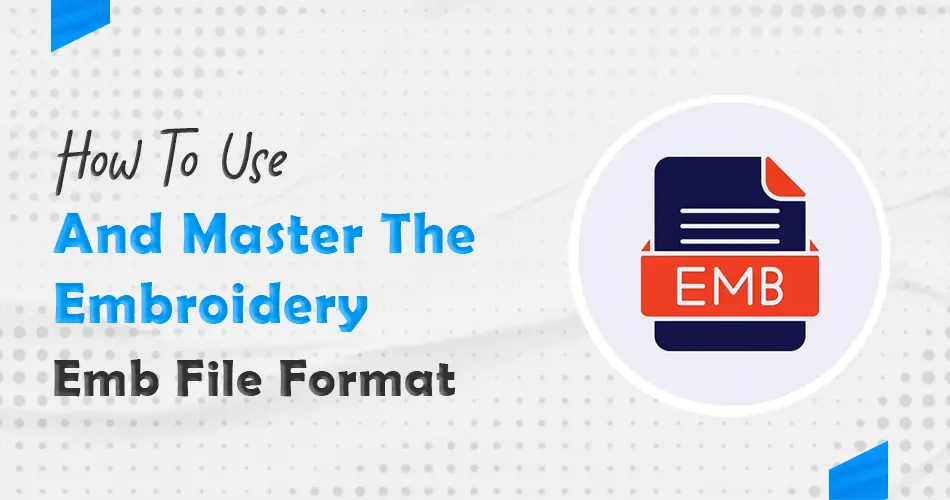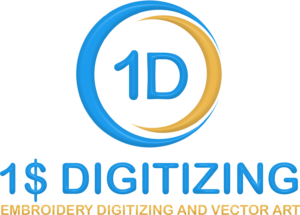EMB File Format is a commonly used file format in the world of embroidery design. Whether you are a beginner or an experienced embroiderer, knowing how to use and master the Emb File Format can greatly enhance your embroidery projects. In this blog post, we will provide a detailed guide on how to effectively work with EMB Files, from understanding what they are to troubleshooting common issues.
What exactly is the EMB File Format?
The EMB File Format is pivotal within the embroidery industry, serving as a digital blueprint for embroidery machines. This proprietary format encapsulates detailed instructions that guide machines on executing intricate designs flawlessly. What sets the EMB format apart is its ability to comprehensively store data on stitch patterns, color sequences, and the spatial arrangement of design elements. Its robustness allows for the preservation of original design integrity, enabling embroiderers to make modifications directly on the file without losing detail or quality.
Essentially, EMB files act as a comprehensive archive, holding not just the visual representation of the design but also the technical specifications required for accurate reproduction on fabric. This multifaceted capability ensures that designs can be scaled, edited, and refined while maintaining their original artistic vision, making it an indispensable tool for designers aiming to translate their creative concepts into tangible embroidered art.
Opening EMB Files: Tools You’ll Need
To initiate work with EMB files, acquiring suitable embroidery design software that is compatible with the EMB File Format is crucial. Programs such as Wilcom, Embird, and Tajima DG/ML are among the industry favorites for their robust functionality in opening, editing, and managing EMB files. These applications offer a comprehensive suite of tools that enable users to intricately view and modify designs, catering to the specific requirements of any embroidery project.
It’s essential to ensure that the selected software is installed and properly set up on your computer. This preparatory step is a prerequisite for a seamless experience in handling EMB files. Before diving into the creative process of editing or converting your embroidery designs, confirming the compatibility of your software with the EMB format will streamline the workflow and prevent potential hurdles in accessing and manipulating your files.
Step-by-Step Guide to Editing an EMB File
Launch your chosen embroidery design software and navigate to the file import option. Select and import the EMB file you want to modify.
Utilize the array of tools available within the software to alter the design. This can include changing the size, rotating the design to a different orientation, or incorporating additional elements like text or new patterns.
Fine-tune the color palette and stitch types to match your creative vision or the requirements of the specific project you’re working on. This step is crucial for ensuring that the final product reflects the intended design accurately.
After making all necessary adjustments, save your work as a new EMB file. This practice helps in preserving the integrity of the original file while giving you the flexibility to experiment with variations.
Conduct a thorough preview of the edited design within the software. This is a vital step to catch any possible errors and to verify that the design will be rendered correctly by the embroidery machine, ensuring your modifications translate seamlessly to the finished embroidery.
Converting EMB Files to Other Formats
When the need arises to transition Emb Files into other formats, such as DST, PES, or EXP, several pathways are available to achieve this. You can opt for online conversion tools designed for quick and straightforward file format changes, which are especially handy for immediate needs without the complexity of software navigation.
Alternatively, utilizing embroidery design software that accommodates a wide array of file formats offers a more integrated solution. This approach not only facilitates conversion but also allows for last-minute edits before the conversion process. When preparing to convert, it’s imperative to select the target format that aligns with your Digitizing for Embroidery specifications. This ensures compatibility and smooth operation during the embroidery process, effectively eliminating common machine-read errors that could arise from format mismatches.
Troubleshooting Common EMB File Issues
Encountering problems with EMB file, such as incorrect color mapping, gaps in stitch sequences, or unexpected design distortion, can disrupt the flow of your embroidery project. Initially, inspect the settings within your embroidery software, ensuring that stitch parameters and color assignments align with your project’s specifications. Misalignment in these settings is often the culprit behind common EMB file errors.
Additionally, verify the compatibility of the EMB file with your specific embroidery machine model; discrepancies here can lead to execution errors that affect the final output. On the off chance that the issue endures after these checks, consider re-importing the EMB file or counsel the software’s help assets for particular investigating tips related to the issue at hand. Locks in with online gatherings or community bolster bunches dedicated to embroidery can also give bits of knowledge and arrangements from experienced clients who may have confronted comparative challenges. This collaborative approach can regularly light up basic fixes or adjustments that correct common issues, ensuring your embroidery project advances easily.
Conclusion
Achieving capability with the EMB file format opens a world of conceivable outcomes for embroidery devotees and professionals alike. As you dive into the complexities of overseeing, altering, and changing EMB files, you’ll find the potential to bring indeed the most complex designs to life with accuracy and creativity.
The travel to achieve this organize includes a mix of specialized ability and artistic vision, supported by the correct devices and a readiness to investigate the profundities of your embroidery software’s capabilities. Remaining current with program updates and effectively partaking in weaving communities can advance and upgrade your ability, advertising modern bits of knowledge and methods to refine your work. Grasp the challenges and learning openings displayed by the EMB record arrangement; with each extent, you’re not fair making embroidery, you’re embroidery your authority into each fasten.




